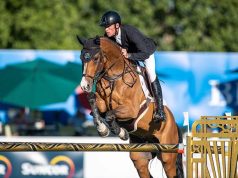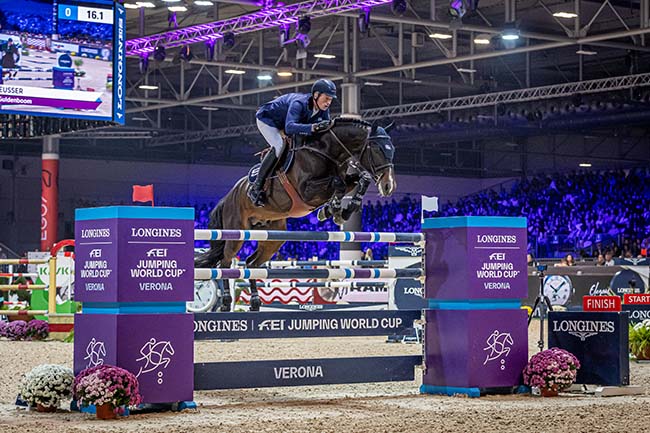By Adriana van Tilburg
Photography: Pauline Clément
Currently, the Neyrat family enterprise – comprising Dr. Frédéric Neyrat, his wife Frédérique, their son Sébastien, and his wife Laure – is standing the stallions Cartani (Carthago - Taggi x Landgraf), Firth of Lorne (For Pleasure - Starlight x Stakkato), and Romanov (Heartbreaker - Narzisse x Fedor). While Frédéric and Sébastien are both veterinarians, the business is administered by Frédérique and Laure.
In the beginning...
Dr. Frédéric Neyrat explains the origins of his passion for breeding: “My father and I both rode horses at a low level. We were very fond of horses and my father was a vet. I was also very successful in triathlon myself, so I was fascinated by improvement in sport. Breeding is part of improving something. How can I improve the dam line? It’s is the same way of thinking as how can I improve my performance? So it all started with my father. He was the first in France to use embryo transfer. He was the one who froze the semen of Galoubet A (Almé - Viti x Nystag) and used it to inseminate the dam of Quick Star (Galoubet A - Stella x Nithard).”
Béligneux le Haras is located in France between Lyon and Geneva, but in the late 1970s, when Frédéric was studying at veterinary school, he had the opportunity to intern with Francis Desbrosse in the Paris region, who was one of the first veterinarians to exclusively treat horses.
In 1981, he was hired by Dr. Blanchard, who worked with Galoubet A at the National Stud the following breeding season. The opportunity to work for Blanchard was exceptional as he had a phenomenal clientele of Thoroughbred studs.
Sébastien Neyrat continues with the story; “Thirty, 40 years ago, everything actually took place in Normandy as far as breeding is concerned, and my father was there for 10 years. Now there is a lot of breeding going on around the big cities, people working in the city and breeding on the side. So new breeders sometimes had only one or two mares. My father founded our farm in 1995, bringing all his knowledge from Normandy. Being between Lyon and Geneva is a good location for breeding, and during this time my father started importing semen from Germany.
“It was very difficult to offer French stallions in France at that time because everything was managed by the National Stud. The only way to become a stallion owner was to look across the borders for stallions that we could offer in France, but French breeders weren’t yet ready to accept foreign stallions. It was the time of Carthago and Corrado I and hardly anyone in France knew these stallions as Holstein was so far away.
“We then started to import Holstein semen with great success as most of these stallions matched very well with French mares. The lines of Corrado I, Cassini I, Carthago and Cor de la Bryère were very good for our mares, and their success changed the opinion of breeders in France.
“We then started to improve French genetics with stallions from Holstein. If we look at today's starting lists, the best horses are products of a pure-bred horse crossed with a pure-bred horse. For example Holstein x Selle Français. In breeding this is called an F1 cross. This combination has for example produced Verdi (Quidam de Revel - Clarissa x Landgraf I, Stamm 474A, bred by Veehandel Musterd BV). This is the reason why we have imported semen from Holsteiner stallions, and we continue to use them.”.. To read the complete article you need to be a subscriber
CLICK HERE TO SUBSCRIBE TO BREEDING NEWS
SUBSCRIBERS CAN READ THE COMPLETE ARTICLE BY LOGGING IN AND RETURNING TO THIS PAGE




